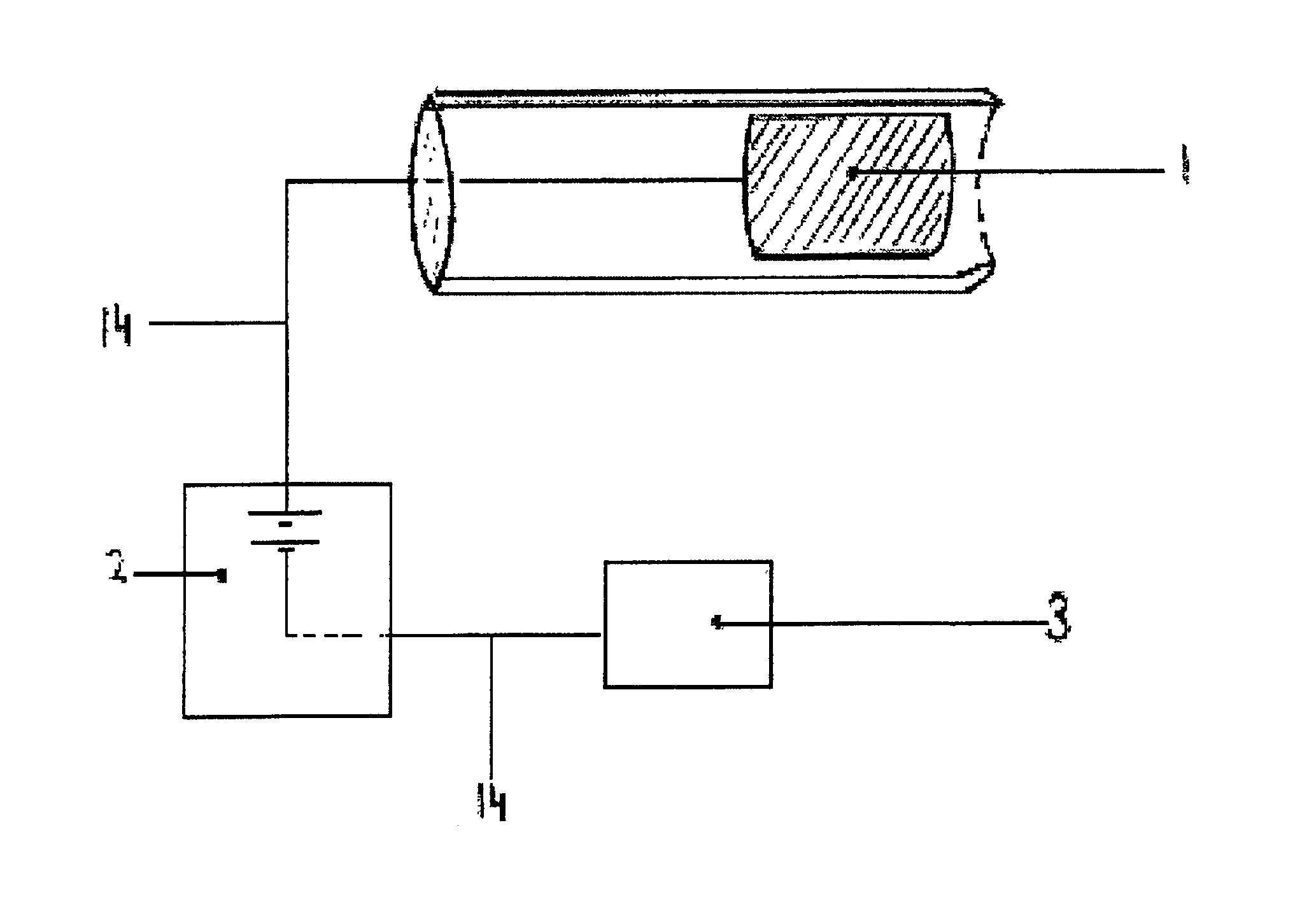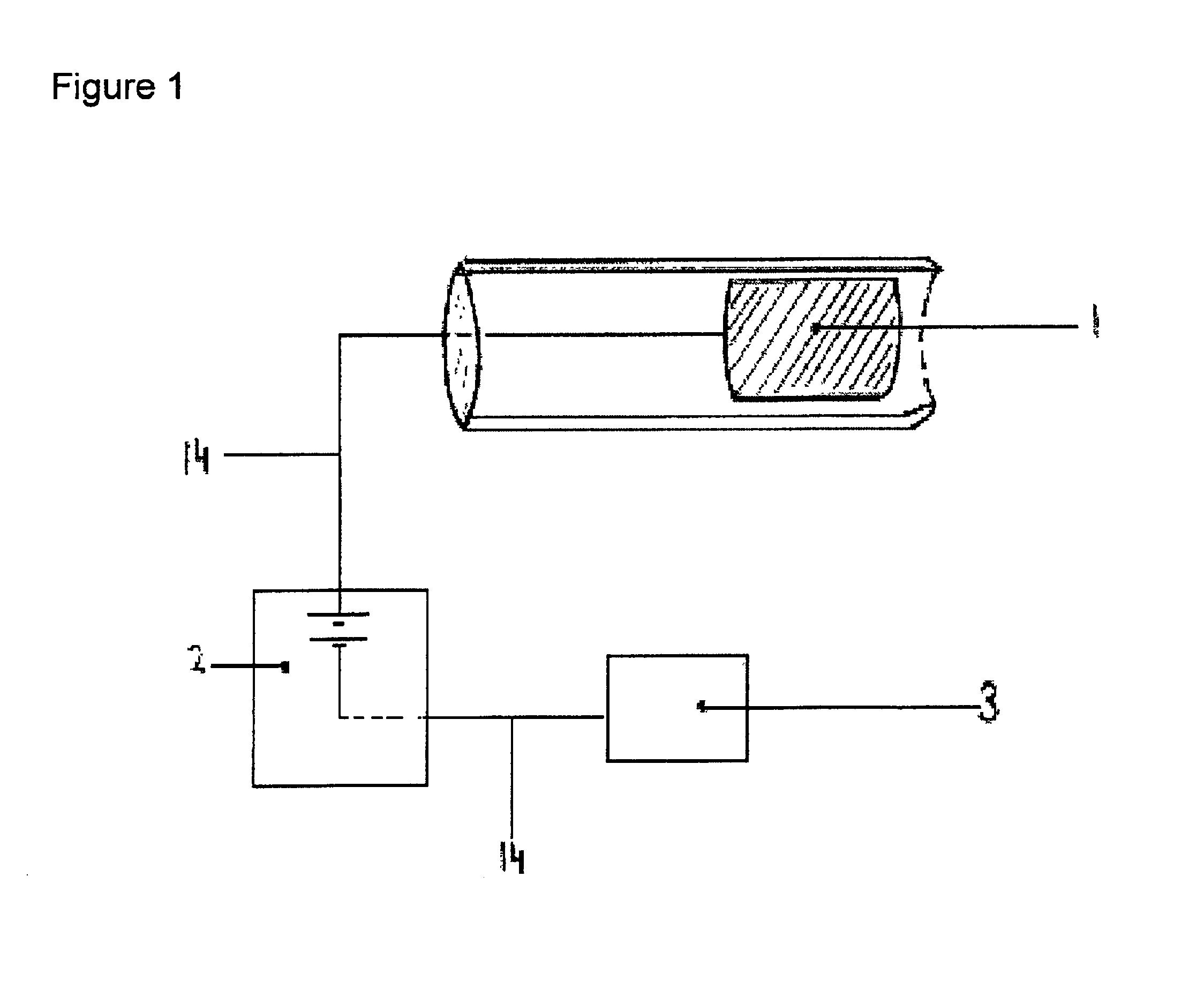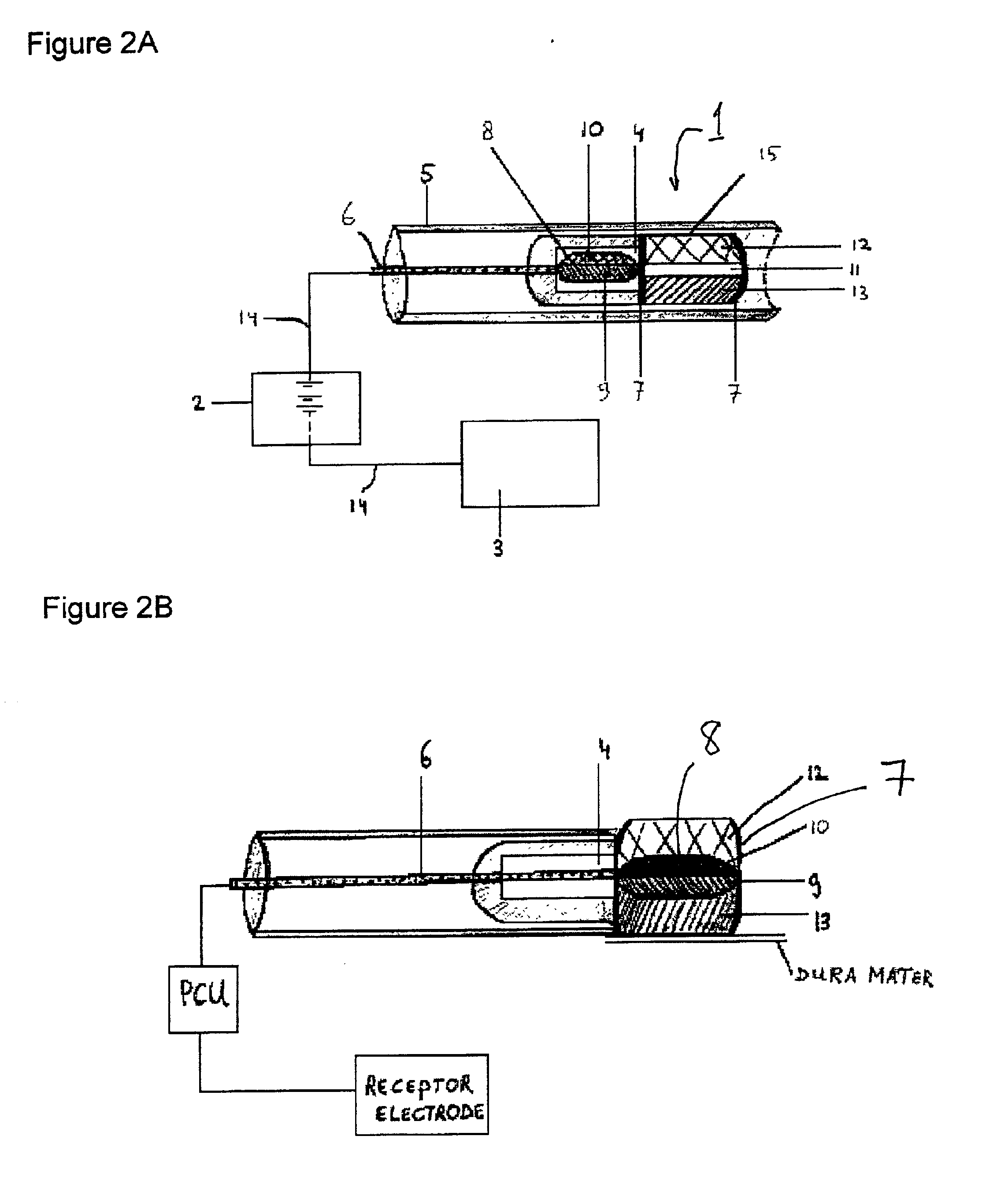Method and device for enhanced delivery of a biologically active agent through the spinal spaces into the central nervous system of a mammal
a biologically active agent and spinal space technology, applied in the field of enhanced delivery of biologically active agents through the spinal space into the central nervous system of a mammal, can solve the problems of severe post-operative headaches, catheter use, non-uniform distribution of epidural anaesthesia, etc., and achieves minimal local and systemic side effects, high patient compliance and acceptance, and high safety.
- Summary
- Abstract
- Description
- Claims
- Application Information
AI Technical Summary
Benefits of technology
Problems solved by technology
Method used
Image
Examples
Embodiment Construction
[0036]Practicing the invention involves inserting a donor or active electrode as by a catheter-based device into the epidural space of a mammal and particularly a human being. The catheter may be positioned in the epidural space by any one of numerous well-known methods such as for example the use of a guide wire and fluorescence visualisation. Another electrode being a receptor or passive electrode for iontophoresis may be implanted in the abdomen or any other internal body location but preferably in vicinity of the donor electrode. Power to the electrodes is provided to develop an electric field radiating outward from the donor electrode to the receptor electrode. In order to reduce the risk of cardiac arrhythmia when the electrodes are in the region of the heart, the current to the electrodes may be pulsed on during systole phase of cardiac pumping and off during diastolic phase. The electric field will cause the biologically active agent to permeate outwardly from the donor elec...
PUM
 Login to View More
Login to View More Abstract
Description
Claims
Application Information
 Login to View More
Login to View More - R&D
- Intellectual Property
- Life Sciences
- Materials
- Tech Scout
- Unparalleled Data Quality
- Higher Quality Content
- 60% Fewer Hallucinations
Browse by: Latest US Patents, China's latest patents, Technical Efficacy Thesaurus, Application Domain, Technology Topic, Popular Technical Reports.
© 2025 PatSnap. All rights reserved.Legal|Privacy policy|Modern Slavery Act Transparency Statement|Sitemap|About US| Contact US: help@patsnap.com



